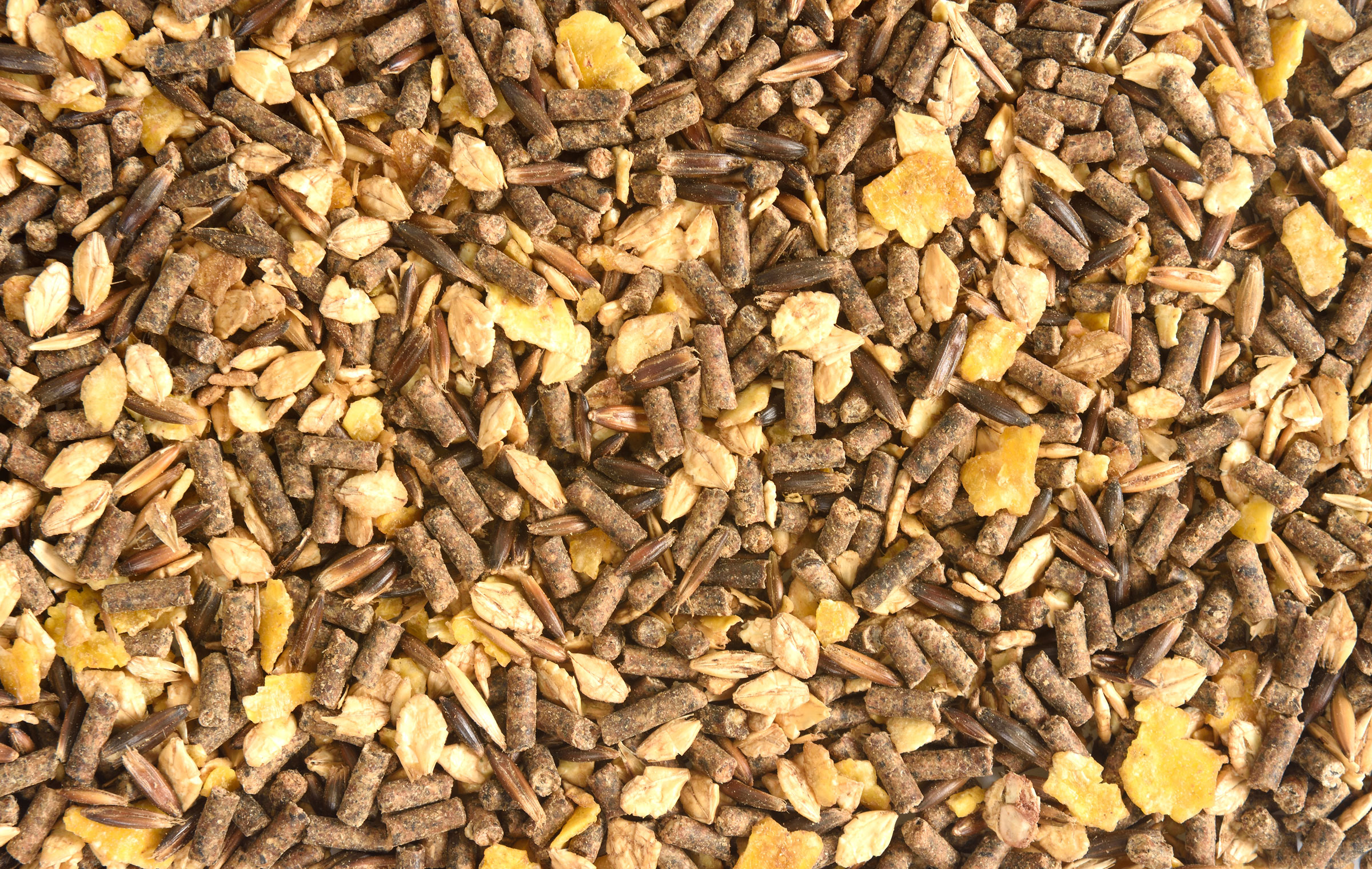
Starch is one form of dietary energy, and it typically comes in the form of corn, oats, barley, and combinations of these grains commonly known as sweet feed or concentrates.
Feeding starch to horses is fraught with problems since grains are not well digested in the small intestine. That means they “spill over” into the large intestines, where they ferment to create an acid environment that kills off normal intestinal microbes.
Current recommendations suggest that no more than five pounds of grain be fed per feeding. It is better if a meal is constrained to only 1-2 pounds of grain.
Grain meals should be separated by at least six-hour intervals. As an example, if you feed approximately 3-6 pounds of corn or about 4-8 pounds of oats to a horse, you’d be providing your horse with 2-4 pounds of starch in that meal. That is a lot of starch, and it can lead to multiple problems, including colic, gastric ulcers, and laminitis, as just a few examples.
Other, more favorable energy sources are available to offer working horses in need of calories—beet pulp, rice bran, and vegetable oils. These are calorie-rich feed sources do not have adverse effects on the equine intestinal tract. Fat has 2.25 times the calories as many grains and is highly digestible by the horse. Fat—as vegetable oil and/or rice bran—can be supplemented up to 10% in the diet, and it is usually added to some form of concentrate.
Some of the best types of “concentrates” are termed complete feeds, which are high in fiber-containing grass or alfalfa hay. While they contain some grains and fat, with amounts varied depending on the product, they rely on forages to create a more balanced feed that relies less on grains.


